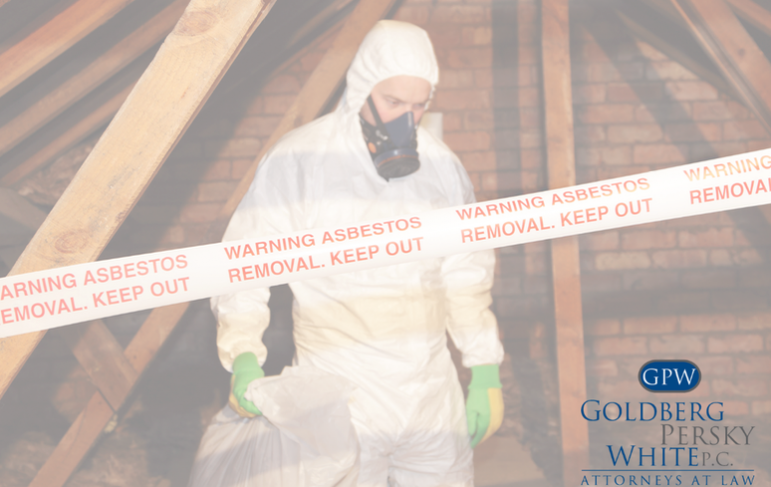Asbestos Exposure Concerns in 2022
Asbestos is one of the most dangerous toxic substances in the world. Asbestos is a recognized health hazard, and its use is now highly regulated by both OSHA and EPA. Asbestos fibers inhaled or swallowed never leave the body because they are too strong to be broken down. Asbestos use dates back thousands of years, but it wasn’t until the 20th-century asbestos use increased in commercial and consumer products and buildings throughout America. Due to the long latency period for asbestos health symptoms to appear of anywhere from 15 to 50 years, we still combat the adverse health and environmental problems from asbestos use.
There is No Cure for Asbestos-Related Diseases
Asbestos fibers are microscopic. Inhaling asbestos fibers causes scar tissue in the lungs known as “asbestosis,” resulting in loss of lung function that eventually progresses to disability and death.
All forms of asbestos are carcinogenic. Asbestos exposure causes cancer of the lung, larynx, and ovaries, and mesothelioma, a cancer of the pleural and peritoneal linings of organs in the body.
According to the National Cancer Institute, since the 1940s, millions of Americans have been exposed to asbestos. Roughly 3,000 Americans receive a mesothelioma diagnosis every year.
Mesothelioma is a deadly and aggressive cancer and the most common asbestos-related illness. It can develop in the lining of essential organs such as the lungs, abdomen, heart, and testicles decades after someone is first exposed to asbestos. Many victims are not diagnosed until cancer reaches its later stages, which limits treatment options. Only 10percent of patients with pleural mesothelioma live longer than five years after diagnosis.
Treatment won’t reverse asbestos lung damage. Treatment for asbestos-related diseases relieves symptoms, treats complications related to the disease, and slow its progress.
Occupational Asbestos Exposure is Still a Threat
Almost 125 million people in the world are exposed to asbestos in the workplace. Approximately half of the deaths from occupational cancer are estimated to be caused by asbestos.
Occupational asbestos exposure can cause workers to develop deadly health problems, including mesothelioma, decades after the exposure. Between 1940 and 1979, almost 27.5 million workers were exposed to asbestos.
Some workers physically handled asbestos regularly through the equipment they operated, products they used, or the personal protective equipment they wore. Many workers in construction, mining, manufacturing, and shipbuilding handled asbestos as part of their job duties on a frequent, or even daily, basis.
Workers that moved between departments, inspected job sites, or worked for suppliers may have been exposed even indirectly if asbestos fibers were in the air.
workers who removed, repaired, or demolished asbestos materials are at particular risk of asbestos exposure.
Asbestos began being phased out of use due to the associated health risks in the early 1980s. However, some workers are still at risk:
- Active-duty military serving overseas could encounter asbestos in older structures
- Auto mechanics working on older vehicles with asbestos-lined brakes and engine parts are exposed.
- First responders are exposed to asbestos if they enter old buildings.
- Workers renovating and demolishing old buildings may be exposed to asbestos if they don’t know beforehand that the mineral is present.
Asbestos in Aging School Buildings
Asbestos continues to endanger the lives of school children and school staff every day, particularly in marginalized communities that lack critical resources to protect themselves.
In 1986, Congress passed (AHERA), the Asbestos Hazard Emergency Response Act, to manage asbestos in schools. AHERA states that local education agencies must inspect their school buildings for asbestos-containing material and prepare an asbestos management plan. Additionally, they are to perform asbestos response actions to prevent or reduce asbestos hazards. There is no evidence of a federal requirement to collect data on the conditions of schools.
Asbestos Exposure from Consumer Products
The FDA released a report in March 2019 citing its concern over the asbestos-contaminated cosmetics at Claire’s and Justice, which included face powders, eye shadows, and a glitter cream.
In October 2019, the company recalled 33,000 bottles of its iconic Johnson’s Baby Powder after testing by the FDA found traces of asbestos in the talc baby powder bottles. In May 2020, the company announced it was discontinuing Johnson’s Baby Powder sales in the U.S. and Canada.
Since 1970, the U.S. has passed regulations that limiting the use of asbestos. These regulations:
- Ban asbestos use in situations where it might be released into the atmosphere
- Require regular inspections that ensure asbestos materials are undamaged
- Establish guidelines to prevent asbestos particles from being released during use
Though OSHA placed tighter restrictions on the use of asbestos-containing products in the 1970s and 1980s, they came too late to help those already exposed. According to a U.S. Department of Interior report, the last American asbestos mine shut down in 2002.
If you or someone related to you has been diagnosed with an asbestos-related disease, contact our mesothelioma law office for a free consultation today.




